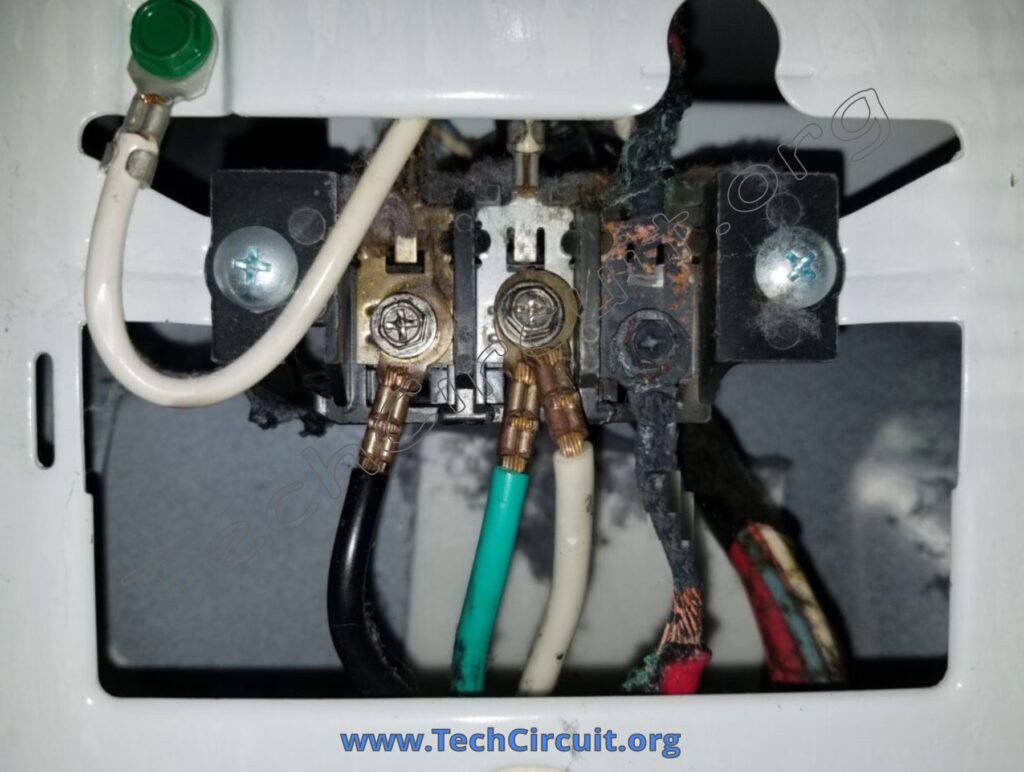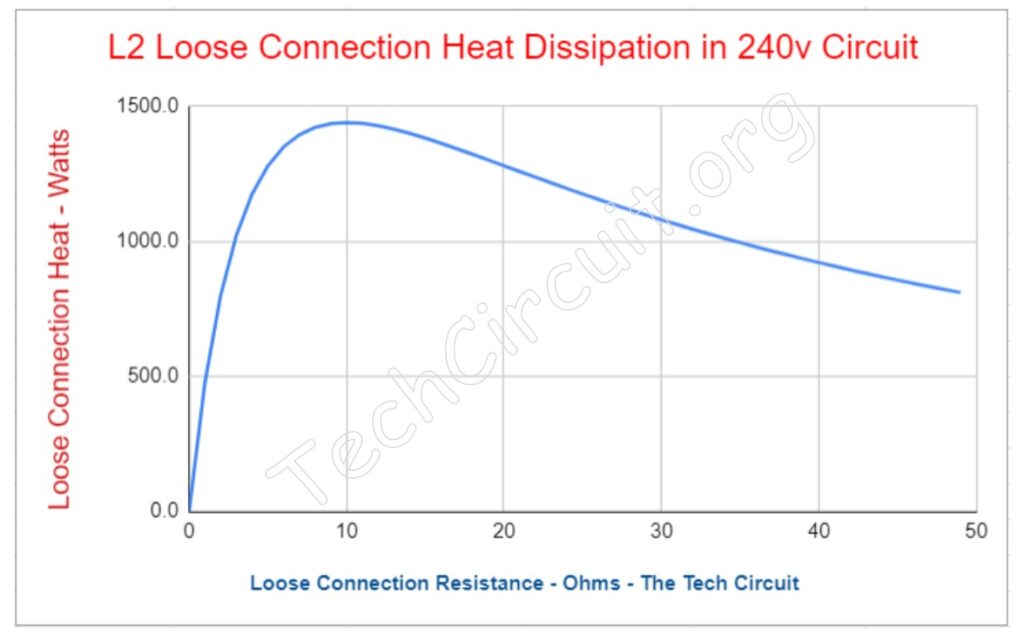
Loose upstream connections in voltage sources can cause “voltage loss” in high current loads. This is because a voltage divider (and incidental secondary load) is created by the loose connection, which robs the primary load of available voltage. In doing this, the loose connection dissipates power (in the form of heat).
Why Loose Connections are Unsustainable
At a relatively low resistance, the heat dissipated by a loose connection can be tremendous – greater than 1000 watts at 2 ohms, with the 24 amp nominal current on the L2 line of an electric dryer, for example. 1000 watts being dissipated at a wire-nut or terminal block is not sustainable. Loose connections in timers and high-current relay contacts are equally susceptible to this effect.
Equilibrium State
Such loose connections naturally establish an equilibrium between the heat dissipated, and their resulting increased resistance due to degradation. This equilibrium is established as the extremely hot connection quickly degrades to a much higher resistance state, runs cooler, and mitigates the degradation process. This is because per Ohm’s and Joule’s law, that increase in resistance greatly reduces the circuit current, and exponentially reduces the power (and resulting heat dissipation) of the loose connection (the incidental secondary load).
Resistance vs. Heat Graph
The below graph accounts for the assumed 10 ohm heating element of an electric dryer in series with the loose connection, as would be the case for a 240v L1 to L2 heating circuit. As shown in the graph, the higher the resistance of this loose connection, the cooler it will run, and progressively less heat-related degradation will occur. The relationship between an upstream L2 loose connection, and the amount of heat that connection dissipates can be easily seen. The resulting heat dissipated from a resistance of most anything above 1 ohm and less than 50 ohms, is simply not sustainable.

Summary
Loose high-current connections tend to “blow-out” very quickly because of the heat dissipated in the early part of their failure. As the graph illustrates, the extreme heat causes the connection to expand, degrade, and increase in resistance until it reaches a sustainable level of heat dissipation that either slows or stops the degradation process. By this time, the connection may be 500 ohms or more, and well into the territory of manifesting as end-load (appliance) symptoms. At this point, using a LoZ meter, Technicians can easily identify such upstream or other breaks in the circuit. For a line-voltage methodology and testing flow-chart, CLICK HERE. For a blog on how LoZ works, CLICK HERE.
*FOR A RECOMMENDED LoZ METER – CLICK HERE*
To DONATE to the Tech Circuit – CLICK HERE
Alphabetical Links to all Tech Circuit Articles and Blogs – CLICK HERE
Links to all Tech Circuit Cheat Sheets/Field References for Appliance/HVAC Techs – CLICK HEREFor additional electrical and electronics learning material for field techs, visit our homepage at http://www.TechCircuit.org or our Facebook group at https://www.facebook.com/groups/746823709133603, or our YouTube Channel
at https://www.youtube.com/c/TheTechCircuitWe are a participant in the Amazon Services LLC Associates Program, an affiliate advertising program designed to provide a means for us to earn fees by linking to Amazon.com
